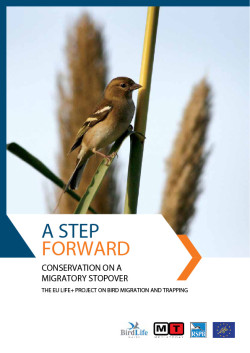The LIFE+ Information and Communication project Bird Migration and Trapping aimed to raise awareness on the importance of Malta to bird migration and the impacts of trapping on Malta’s wildlife. The communication project was a partnership between BirdLife Malta, the Royal Society for the Protection of Birds (BirdLife in the UK) and Media Today. It was 50% funded by the EU LIFE unit with the rest being contributed by project partners.
Malta is situated on the central migratory flyway and is a critical stepping stone for birds migrating between their European breeding grounds and African wintering grounds. This is why large numbers of birds migrate over the Maltese islands every spring (to Europe) and autumn (to Africa).
Trapping in Malta was allowed for 7 finch species (song birds) and 4 other species, namely Turtle Dove, Quail, Song Thrush and Golden Plover.
Trapping of wild birds is not permitted in the EU under the Birds Directive. When Malta joined the EU it agreed with the European Commission on a 5 year transition period, ending in 2008, to phase out trapping. This deadline has now passed and according to the Accession Treaty agreement trapping should no longer be permitted.
Trapping of wild birds using clap nets and live decoys is a very effective method of catching birds. Not only does this practice have serious impacts on breeding populations of the target species (such as finches) in Malta but it also has a significant effect on valuable and protected habitats because trappers clear vegetation, in many cases by burning or using toxic herbicides, to open space for their nets.
Want to know more? Click to view the project report.

